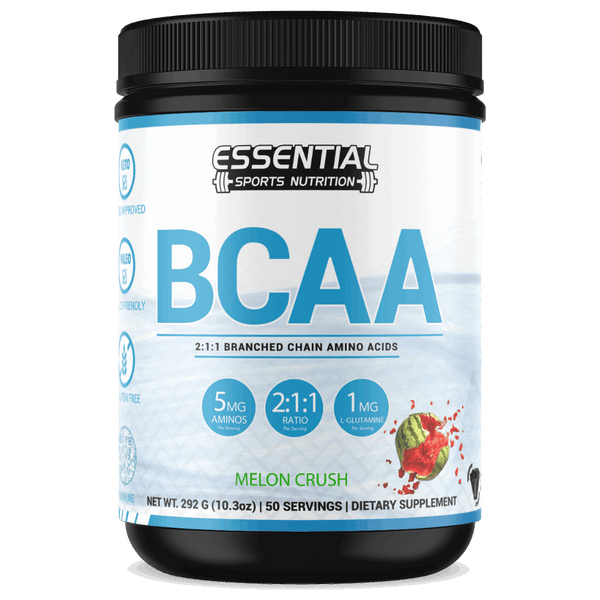15 Minutes to a Pain-Free Lower Back: Try These Daily Stretches!
15 Minutes to a Pain-Free Lower Back: Try These Daily Stretches!
Back stretches are easy and great for easing discomfort and boosting flexibility. Doing them every day for about 15 minutes can really help your back. Start with simple moves like knee-to-chest stretches and slowly increase the number you do.
These exercises are key for a strong and flexible back. They fit well into your daily morning or evening plans. You should have a pro, like a physical therapist, help you choose the best ones to do safely.

Key Takeaways
- Back stretches are essential in relieving lower back pain and improving flexibility.
- Just 15 minutes daily can significantly enhance your spinal health.
- Integrate stretches like knee-to-chest and lower back rotational exercises into your routine.
- Consult a physical therapist for personalized stretch routines.
- Ensure consistent practice for optimal results.
Introduction to Back Stretches
Back stretches are super important for your spine's health. You should do them every day. They make you more flexible and help stop lower back pain. These moves boost your motion range and keep your muscles strong. This is really good for your health.
Why Back Stretches are Essential
Adding back exercises to your routine is a must. They make your spine stronger and more flexible. Doing this regularly helps you avoid back pain. It also makes you less stiff right away.
The Benefits of Regular Back Stretching
Stretching your back regularly improves your spine over time. It cuts down on back pain and makes you move better. This simple daily task also helps your posture. It strengthens your spine's support muscles. This way, you avoid getting hurt.
When to Consult a Doctor
If you have a lot of lower back pain, see a doctor before doing stretches. They will make sure the exercises fit you well. Getting professional advice means you catch any serious issues early. Always listen to what the doctors say for your spine's health.
Key Muscle Groups Involved in Back Stretches

When you stretch your back, important muscle groups get to work. They help keep your spine healthy. Knowing how these muscles work can make your stretches better. You'll hit all the right spots for the best results.
The Role of the Lower Back Muscles
The lower back muscles are key for keeping your spine steady. When you stretch them, you ease tension, move better, and avoid injuries. It also helps with posture and being limber.
Hip Flexors and Their Impact
Hip flexors are at the front of your hips. They keep your hips aligned and flexible. Stiff hip flexors can limit your movements and cause discomfort. Doing hip flexor stretches can make your back exercises more effective. This cuts down on strain in the lower back.
Engaging the Core Muscles
Your core matters a lot during back stretches. It helps keep your spine stable and supported. The core includes your abs and back muscles. They help you balance better and put less stress on your lower back when stretching. A strong core makes your stretching safer and more beneficial.
- Lower Back Muscles: They're crucial for a stable spine and good posture.
- Hip Flexors: Important for moving your hips well, which boosts your overall flexibility.
- Core Muscles: They aid in keeping your spine supported and balanced when you stretch.
For a great back stretching routine, aim to work all these muscle groups. This way, you not only get more flexible and feel better. But you also build a muscular system that really supports your spine's health.
Lower Back Pain Relief with Back Stretches

Lower back pain happens to many people and can really slow you down. The best way to tackle it is with specific stretches and exercises. Adding these to your daily routine can make a big difference.
Understanding Lower Back Pain
The reasons for lower back pain vary but can involve things like sitting too much or doing the same movements over and over. It’s key to figure out what’s causing your pain so you can do the right exercises to help.
Common Causes of Lower Back Pain
Jobs that keep you sitting, lifting heavy things, and bad posture can lead to lower back pain. So can stress. Knowing these causes can steer you away from activities that could make the pain worse. Instead, focus on movements that ease the ache.
Stretches to Ease Lower Back Pain
Some simple stretches can help reduce lower back pain:
- Knee-to-Chest Stretch: Get on your back, hug one knee to your chest for 20 seconds, then switch knees. This stretch is great for easing lower back pain.
- Pelvic Tilts: Lie on your back with knees up and feet on the floor. Tighten your tummy, flatten your lower back to the ground, then relax.
- Supine Spinal Rotations: On your back, pull your knees toward your chest. Drop them to one side, keeping your shoulders down. This move targets your lower back and can bring quick relief.
Doing these exercises regularly can really help with lower back pain. It’s also good to add some light activities, like walking, to your daily routine. This combo can speed up your recovery.
Spine Flexibility Exercises for Improved Mobility
Keeping your spine flexible is super important for moving well and living life to the fullest. Doing exercises to make your spine more flexible will help your body and mind a lot.
Importance of Spine Flexibility
A flexible spine is key to better movement and stopping injuries. Exercises that make your spine flexible help you move easier. They also get rid of tension and pain in the neck, back, and shoulders.
Having a healthy spine boosts how well you do in everyday tasks and sports.
Exercises to Enhance Spine Flexibility
Add some special spine exercises to your routine, and you'll see a big change. Yoga moves like Child’s Pose and Sphinx Stretch really help. They stretch and strong your spine. This makes your body work better and feel less tense.
Doing these exercises often is very important. It keeps your spine in good shape.
Maintaining Spine Health
To keep your spine healthy, mix in some stretching and strength exercises. And, don’t forget about your core. A strong core helps your back stay healthy over time. This leads to better posture and less chance of back problems.
Sticking to these exercises can make you more flexible and keep you feeling good.
Posture Improvement Stretches
Did you know that bad posture can lead to more than just feeling uncomfortable? It can cause chronic pain and health issues too. Doing stretches to improve your posture is key to keeping your back healthy and feeling good all over.
How Poor Posture Affects Your Back
Not sitting or standing straight can mess up your spine, causing continual pain and discomfort. This leads to muscle aches, tightness, and sometimes even headaches. Bad posture also messes with how well you breathe and digest food, hurting your health more.
Stretches to Correct Posture
There are certain stretches that can really help with your back posture. Let’s explore some:
- Shoulder Blade Squeeze: Straightening your shoulders and boosting your upper back muscles.
- Seated Lower Back Rotational Stretch: Makes your lower back more flexible and aligned.
- Chest Opener Stretch: Stops you from slouching and helps you stand taller.
Tips for Better Posture
Some easy posture tips can make a big difference in taking care of your spine. Here’s what you can do:
- Adjust Your Workstation: Make sure your computer screen is at eye level, and your chair supports your lower back.
- Mind Your Sitting and Standing Positions: Always have your feet flat when sitting and stand with your weight evenly spread.
- Incorporate Daily Stretches: Do posture exercises regularly to keep strong and maintain good posture.
Attempt these posture strategies daily to fight off the bad effects of poor posture. By sticking to these tips, you will see big improvements in your back health over time.
Back Muscle Stretches to Reduce Tension
It's key to spot and deal with back muscle tension early for overall muscle health. You can tackle this by adding special stretches to your daily plan. This helps to 'let go' of the tension and stop bigger issues.
Identifying Tension in the Back Muscles
Essentially, you need to know where it hurts to treat muscle tension. Signs like feeling stiff and limited movement or back pain are clues. Recognizing these signs helps you pick the right stretches to ease the tension.
Effective Stretches for Back Muscles
Two stretches, the Cat-Cow pose and the seated spinal twist, can really help. They make you more flexible and free you from tight back muscles. Doing them regularly can bring big relief.
- Cat-Cow Pose: It smoothly stretches the back, neck, and chest, making your spine more flexible.
- Seated Spinal Twist: This move focuses on the spine and upper back, helping to avoid muscle spasms.
Incorporating Stretches into Daily Routine
To keep your back healthy, a daily stretching routine is a must. These stretches should be part of your day, making sure your back stays free of tension. Doing it in both mornings and evenings works best for ongoing relief.
| Stretch | Benefits |
|---|---|
| Cat-Cow | Improves flexibility, reduces tension, and promotes spinal health |
| Seated Spinal Twist | Targets spine and upper back, prevents muscle spasms |
Specific Sciatica Stretches for Relief
It's important to know about sciatica pain to find ways to relieve it. This pain comes from a compressed nerve, leading to sharp pain in one leg. Doing certain stretches and using remedies can help you manage and reduce this pain.
Understanding Sciatica Pain
Sciatica happens when the sciatic nerve gets irritated or pressed. This nerve goes from the lower back to the legs. It causes strong pain, along with numbness or weakness. Knowing what causes sciatica helps in treating it right.
Targeted Stretches for Sciatica
Stretching in a targeted way can ease sciatica pain. Some excellent stretches are:
- Piriformis Stretch: It helps loosen the piriformis muscle, easing nerve compression.
- Knee to Opposite Shoulder: This stretches the glutes when you pull your knee across to the opposite shoulder.
- Seated Spinal Twist: Twisting your torso stretches your lower back and lessens sciatic nerve pressure.
Other Remedies for Sciatica
There are more ways to help with sciatica pain. These include:
- Low-Impact Exercises: Activities like walking or swimming keep you mobile without harming the nerve.
- Maintaining an Active Lifestyle: Moving regularly fights off muscle stiffness and reduces the chance of nerve pressing.
- Heat and Cold Therapy: Putting heat or cold on the area can ease pain and lower inflammation.
Using these stretches and other tips together, you can cut down on sciatica discomfort.
Herniation-Related Back Stretches
A herniated disc might hurt a lot, causing severe back pain. This pain can move down your legs or make your muscles weak. It's key to spot herniation early to manage symptoms well.
Identifying a Herniated Disc
It can be hard to guess if you have a herniated disc. Look for sudden, sharp back pain and leg pain getting worse when you sit or bend. If you feel weak, numb, or tingling, see a doctor right away for a proper checkup.
Safely Stretching with a Herniated Disc
If you have a herniated disc, stretching safely is crucial. Specialists recommend certain exercises like simple hamstring or pelvic tilt moves. These can take off a lot of discomfort from the disc and keep you flexible.
| Symptom | Description |
|---|---|
| Sharp Back Pain | Sudden and intense pain in the lower back. |
| Radiating Leg Pain | Pain extending from the lower back down one or both legs, often worsening with movement. |
| Muscle Weakness | Notable decrease in muscle strength, making daily activities difficult. |
| Numbness or Tingling | Prickling or loss of sensation in the legs or feet, indicative of nerve compression. |
| Loss of Bladder/Bowel Control | Serious symptom requiring immediate medical attention. |
Targeted Scoliosis Stretches
Learning about scoliosis is key to handling it well and feeling better. Doing stretches often makes your body more flexible and the muscles around your spine stronger.
What is Scoliosis?
Scoliosis means your spine curves sideways. This can cause pain and make it hard to move. It's important to figure out how bad the scoliosis is and what type it is so you can do the right stretches. Catching it early and keeping an eye on it are crucial for good scoliosis management.
Effective Stretches for Scoliosis
Adding the right stretches to your day can really help. Some good ones for scoliosis are:
- Standing Hamstring Stretch: This helps your hamstrings get longer and more relaxed, which takes pressure off your back.
- Cat-Cow Stretch: It's a simple way to make your spine more flexible and ease tightness.
- Pelvic Tilts: These make your lower back and abs stronger, which supports your spine better.
Managing Scoliosis with Regular Stretching
To deal with scoliosis, you need to stretch often and do exercises that fit your body. Stretching regularly makes you more flexible and your muscles stronger, which really helps lessen the pain. Always do these stretches with guidance from a pro to make sure they're right for you.
Incorporating Core Strengthening Stretches
Your core is key for a healthy back. Adding core strengthening stretches to your daily plan helps. These exercises boost your stability and ease back pain. They really do make a big difference.
The Connection Between Core and Back Pain
Knowing how your core and back connect is key. The muscles in your core, like the abs and obliques, help keep you standing tall. When your core is weak, your back takes more strain. This can lead to pain. Strengthening your core lessens this load, supporting your spine well.
Core Exercises to Support Back Health
Doing core exercises for back health is crucial for a strong back. The plank, bridges, and pelvic tilts really work. They help make your core stable and strong. This spreads out weight and cuts stress on your lower back. Keep up with these exercises to make your core support your spine better.
Combining Stretches and Core Workouts
Maximize your health by mixing stretches with core workouts. This combo works wonders for your back. Start with dynamic stretching to wake up your muscles. Then do core exercises. Finish with static stretches for flexibility and calm. This balanced plan builds strength and keeps your spine healthy.
In short, linking core and back health, doing specific exercises, plus blending stretches and workouts is crucial. You're on the right path for a strong, painless back.
Conclusion

Adding back stretches to your daily routine has lots of benefits. These include less pain, more movement, and better posture. By stretching regularly, you help keep your back healthy. This lowers the chance of having problems later on.
Keeping your back in good shape takes work. It's important to do stretches for flexibility and exercises to make your core stronger. Together, these actions support your spine well. They can reduce pain and stop it from coming back, keeping your spine healthy.
Remember, knowing when to get professional help is key for your back's health. Health experts can give you advice fit for you, ensuring your stretches are both safe and useful. By following their guidance and sticking to a regular stretch plan, you're looking after your back for the long run.
FAQs
Q: What are some common back stretches for low back pain?
A: Some common back stretches for low back pain include hamstring stretches, knee-to-chest stretches, cat-cow stretches, and child's pose.
Q: How often should I do back stretches?
A: It is recommended to do back stretches for low back pain 2 to 3 times a day to help alleviate discomfort and improve flexibility.
Q: How long should I hold each back stretch?
A: It is advisable to hold each back stretch for about 5 to 10 seconds to allow the muscles to relax and the stretch to be effective.
Q: Are back exercises important for managing low back pain?
A: Yes, back exercises are crucial for strengthening the back and abdominal muscles, improving range of motion, and preventing future episodes of low back pain.
Q: Can back stretches help with neck pain too?
A: Yes, some back stretches can also help alleviate neck pain by releasing tension in the neck and shoulders.
Q: How can I make back stretches more effective?
A: To make back stretches more effective, focus on proper form, breathe deeply and relax, hold the stretches for the recommended time, and avoid any movements that cause pain.
Q: Where can I find more information about back stretches and exercises?
A: You can find detailed health information and show transcript about back stretches and exercises on reputable websites like spine-health or consult a healthcare professional or physical therapist for personalized guidance.























